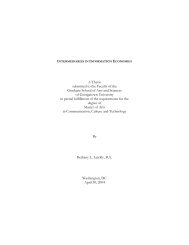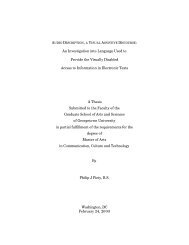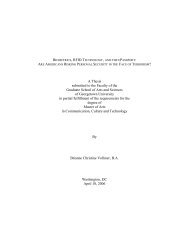A Comparative Case Study of Global Marketing and Ethnocentrism ...
A Comparative Case Study of Global Marketing and Ethnocentrism ...
A Comparative Case Study of Global Marketing and Ethnocentrism ...
You also want an ePaper? Increase the reach of your titles
YUMPU automatically turns print PDFs into web optimized ePapers that Google loves.
Table 2-2: Message questions (not in survey format)<br />
<strong>Marketing</strong> Factor 2: Message<br />
Meaning conveyed through the marketing message<br />
What is the marketing message being conveyed in this website? (i.e. What is the site<br />
saying to you, other than “buy this car”?)<br />
Is the message specific to Brazilian culture? If not, should it be?<br />
What kind <strong>of</strong> message is being conveyed with the timeline section <strong>of</strong> the GM site?<br />
Do you think the message is aimed with an American consumer in mind rather than a<br />
Brazilian consumer? If so, does that make the product seem less appealing to you?<br />
<strong>Marketing</strong> Factor 3: Image. This factor includes the photos, drawings, animation<br />
<strong>and</strong> other visual stimuli used to convey meaning in a marketing message. When<br />
messages are presented through the Internet, photographs rather than language can be<br />
more effective than words alone. What is aesthetically pleasing is culturally linked, so<br />
it is essential to underst<strong>and</strong> the tastes <strong>and</strong> preferences <strong>of</strong> the audience in this type <strong>of</strong><br />
marketing. Colors <strong>and</strong> symbols that communicate positive messages in one country<br />
may have a completely different meaning in another. Interview questions relating to<br />
image are included in Table 2-3.<br />
37






